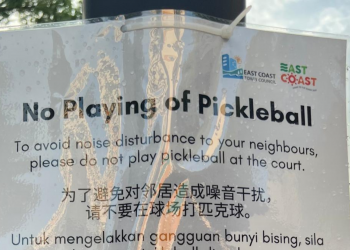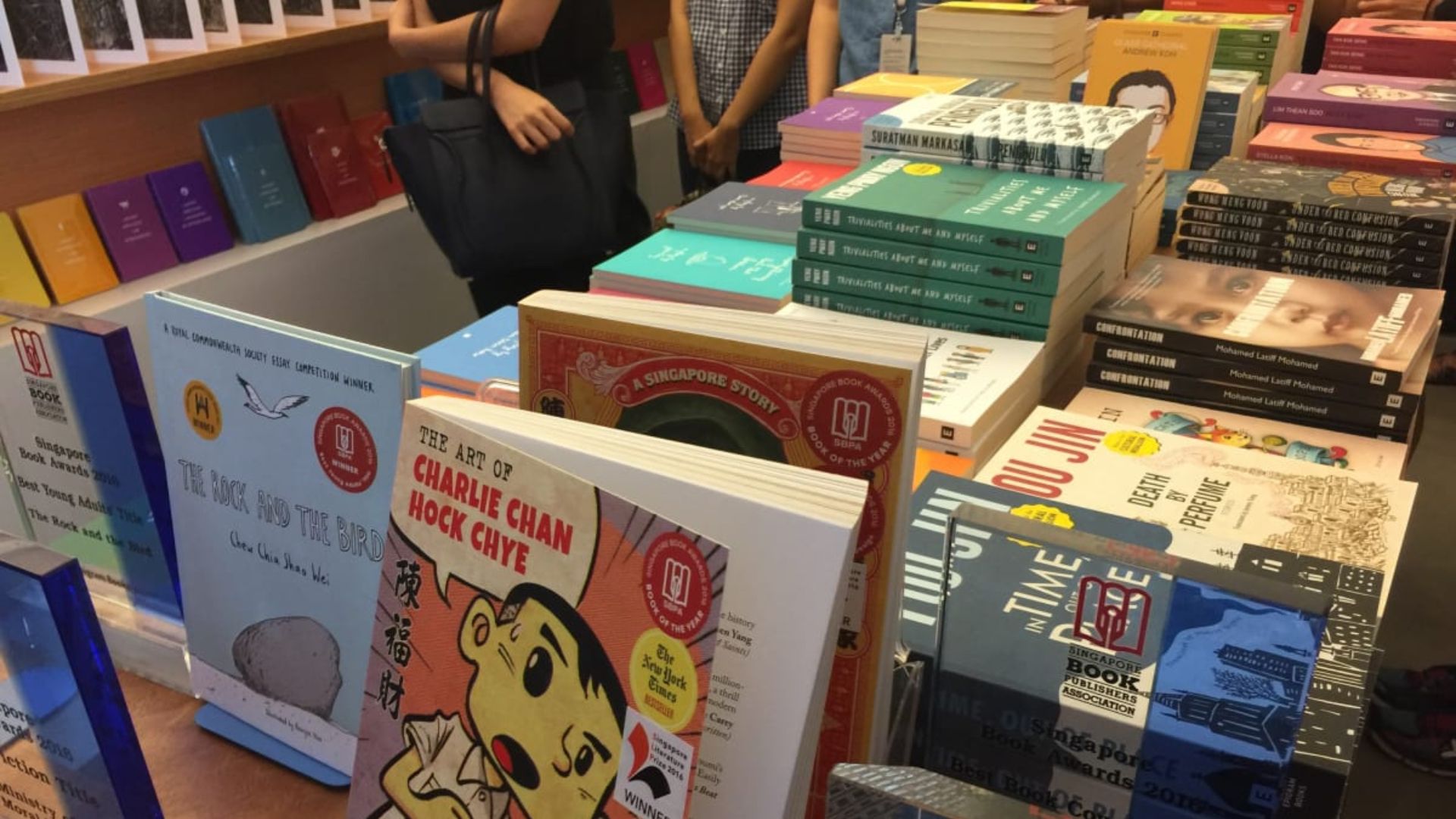If there is one thing that unites humanity, it is our shared mortality.
Everyone lives and dies eventually, no matter who he or she is or what he or she believes in. Yet there is that fascination among all about the afterlife.
Many movies, across different genres and cultures, have had their depictions of Hell, and in October 2021, Singapore’s newest museum opened its doors to give the public a peek into the afterworld. Hell’s Museum, located inside Haw Par Villa, provides an Asiatic view of where the dead suffer for eternity.
These include a traditional Chinese void deck funeral and grave. “Though it is a common sight in the HDB estates, most visitors still ask many questions about it,” says Chief Curator of Hell’s Museum Eisen Teo.
“Most of our visitors are Singaporeans. They see these things in their everyday lives, but they don’t know the details. You don’t inspect a funeral because it’s someone else’s passing-it’s not nice,” he adds.
TheHomeGround Asia chats with Mr Teo, for an inside look into Hell’s Museum, as well as his work as his work as a historian of Singapore’s past.

TheHomeGround Asia (THG): As a historian , what do you hope to achieve through your research on Singapore?
Eisen Teo (ET): I want to catalogue Singapore’s heritage, research and write stories about it. Hopefully, this will leave a legacy for future generations. A legacy that will outlive me.
At the end of the day, it’s not about me but it’s about my country’s heritage. I feel that if Singaporeans don’t do it, then no one will. We obviously can’t rely on outsiders. I think as a Singaporean, I should take the initiative and do it first.
THG: What sparked your interest in history? Can you recall a specific memory?
ET: History involves a lot of reading and a lot of consumption and analysis of materials. So reading definitely is a skill that’s key to excelling in history. I credit my parents first for getting me in the habit of reading. Reading is a joyful hobby. Ever since I could read, at maybe two or three years old, they would take me to the Marine Parade branch library.
They brought me there every week to borrow books; as many books as I wanted. As a result, I read a lot. I read about 15 to 20 books a week. They also made me read The Straits Times. Say what you want about reading The Straits Times but at the end of the day, it is a great way to build your grammar and vocabulary as a kid. I read it every day. As a result I had a lot of knowledge on current affairs. I read about wars and politics, so even before I enrolled into primary school, I was already very interested in the world and how it functioned. That naturally led to my interest in history.
In Secondary One, I had an excellent history teacher –Miss Pamela Lim. She sparked my love for history. The way in which she taught her lessons was pretty much out of the box. I think at the time, I was part of the Gifted Education Programme (GEP), which was relatively new. In the GEP, teachers were given freedom to conduct the lessons, which no mainstream teachers had the ability to. So, she incorporated very fun elements like role playing and debates in hers. These brought historical figures and events to life.
There was this one time when we had to learn about the history of British Malaya. We had to learn about the British intervention in Perak and the assassination of JWW Birch. We just had to study the events and dates, which was very boring in itself.
So, she decided on a play and got the class to reenact the assassination of JWW Birch. I was chosen to be Birch himself. To this day, I still remember the whole play and the whole process. The events of the assassination have stayed with me, even though I’ve made no effort to record them. I still recall them vividly. That’s because of the fun way in which she conducted the class. It’s a great example of the impact of a good teacher. If they conduct lessons well, and make students enjoy the topics, then students will remember the subject for life.
THG: How is Singapore’s history relevant to the everyday Singaporean then?
ET: Singapore is a relatively young nation. We became independent in 1965. So we are only about 57 years old. But our heritage goes way beyond 57 years. Archaeological studies show that our heritage goes back at least 700 years. Archaeological works in Fort Canning, and in the city area tell the story of about 700 years or so of history.
This heritage is a very important cultural ballast that keeps us rooted to something that is older than just 57 years, because, to be honest, 57 years is not a long time at all. There are many people in Singapore who are aged 57 or more.
I think that’s very important because we are still trying to find ourselves in the world as a people. Many are still not sure what the identity of a Singaporean is. This heritage gives us at least something to start with.
What makes this balance all the more priceless is that this heritage is constantly under threat in Singapore. One reason is because we are a city where land is very scarce. We live in a capitalist system that values economic development above almost everything else but this is changing in recent years, with greater emphasis on other things like mental health.
As an idealist, you can demand that heritage be preserved for what it is, that means you set aside a building or a space with heritage value. Unfortunately Singapore is run like a corporation. That’s the model that’s already been set up.
I’m not saying that’s entirely a bad thing. But as a result, both physically-built and intangible heritage are constantly under threat of being destroyed for the sake of economic development. Some examples include buildings which are only 30 or 40 years old that are not even falling apart, yet they are demolished because they have to make way for bigger buildings or developments. A great example is the Old National Library building at Stamford Road. It was a beautiful building, but was torn down for a road tunnel that cuts travelling time by just 10 minutes.
So in hindsight, that was a pretty bad decision. Many of these buildings are constantly torn down in the name of progress or just to rejuvenate the space.

THG: You are the Chief Curator of Hell’s Museum. What is Hell’s Museum?
ET: Hell’s Museum is Singapore’s newest museum. It opened on 31 October last year. It is the world’s first museum on death and the afterlife, which is quite surprising, because if you think about it, the afterlife is definitely something that we all have to live with … pun intended. The afterlife has been humanity’s preoccupation and yet there hasn’t been a museum on it, until Hell’s Museum.
Hell’s Museum is actually inside Haw Par Villa and it includes the 10 Courts of Hell. It has an indoor portion and outdoor portion. Hell’s Museum covers perspectives and insights on death and the afterlife across various religions, cultures and civilisations.

THG: Where did the inspiration for Hell’s Museum originated from?
ET: It was the idea of my boss, Director of SHC and Journeys Jeya Ayadurai. Many people visit Haw Par Villa for the Ten Courts of Hell. So we realised that it is a special attraction. It was a dark tunnel filled with severe-looking judges, scary hell guards, and gory punishments. There were dioramas of sinners being decapitated, having their intestines pulled out, being tossed into a pool of blood, and so on.
On one hand a lot of people found it gross, scary and frightening. On the other hand, there was this morbid fascination. So we decided to capitalise on it. We were thinking of how to revitalise Haw Par Villa and we realised that building a museum around the famous Ten Courts of Hell was a great way of attracting people back to the park.
We also wanted to explain the deeper philosophy and the heritage behind the 10 Courts of Hell, because many people just see the Ten Courts of Hell as the device to scare young children and have a cheap laugh. The Ten Courts itself is an institution going back more than 1,000 years old. It’s a great way to explain the mixing of ideas across ancient civilisations. In this case, it’s the Chinese and Indian civilisations, as well as a combination of Hindu, Taoist, Buddhist and Confucian concepts. So, we decided to build the museum around the Ten Courts of Hell and explain to visitors their deeper significance. We did not want to just build a museum about the Ten Courts, or just focus on individual religions like Hinduism or Buddhism or Taoism.
We realised that ideas about death and the afterlife permeate almost all belief systems, so we decided to do comparative studies, and explore perspectives of death and the afterlife across space and time and look at these ideas across 300,000 years of human existence.
So far, visitorship to Hell’s Museum has been quite strong and we are quite heartened by it.
THG: What was the process of creating Hell’s Museum?
ET: One thing we had to do was decide on a coherent narrative and flow from start to end. In this case, we integrated both the intellectual element and the physical elements.
When working on a museum, you have to take into account the physical space, the physical constraints, and see how you can work intellectual ideas into it.
We learnt that at the end of the day, if the museum visitor’s experience is not good, he won’t be able to take in the ideas properly. That would mean we have failed.
There’s an indoor element where we needed to tailor our ideas to fit both indoor and outdoor so we did the necessary research on the subject matter.
We read about religions, other belief systems, cultures and practices before engaging external parties to produce original videos and artefacts.
For example, we worked with a local grave maker to produce a traditional Chinese grave. This was where my personal life and my work life came together.
I was actually searching for my paternal grandfather’s grave and I eventually, I found it in a cemetery next to the future Mount Pleasant HDB estate, just south of Bukit Brown. That was when I happened to see the contact of a grave digger in the cemetery, so, I called him. It was he who connected me with a grave maker. This grave maker then worked with the museum to create the traditional Chinese grave.
Lastly, we worked with a contractor to construct the museum. We also worked with designers to create exhibits and storyboards. We had to juggle a lot of projects at the same time, because we had quite a specific timeline. As a result, we didn’t have the luxury of working on one task at a time. A lot of these tasks had to be done at the same time.
THG: What challenges did the team encounter in creating Hell’s Museum?
ET: As we had limited space and time, we couldn’t put everything about death and the afterlife into the museum. We had to pick and choose, and think very carefully about what we wanted to include.
There was a lot of thinking and stretching out of ideas to create a narrative that was both entertaining yet educational and meaningful to visitors.
We had to do justice to the subject in the limited space that we were given. Another challenge was COVID-19. There were many safe management measures for the workers and of course, the constant threat of workers being infected. If workers are infected, there’s nothing we can do. Fortunately, no one was infected. Fortunately, we managed to finish the museum on time.
The entire project took four years. It was started in 2017. I felt really happy when it opened.
THG: What do you hope to convey through the Hell’s Museum?
ET: I really like this phrase that my boss coined. He said, “Knowledge leads to understanding which leads to appreciation.“
It’s essentially what we hope to achieve with Hell’s Museum. We provide visitors with knowledge that will lead to greater understanding and greater appreciation of our shared humanity.
People focus on the differences in belief systems and religions. They try to argue that their religion is the right one and other religions are wrong. But we try to look past that and focus on shared experiences. We try to point out the similarities in ideas of the afterlife for different belief systems.
I feel that this is actually what we need. In a world that’s filled with conflict and differences, we need to focus on what we share, and what we have in common rather than what’s different across different groups of people.
At the end of the day, we all die, we all face death. No matter what religion you believe in — even if you are atheist –you think about what happens to you after you die. I’m sure everyone has thought about that at some point in life.
To find out more about Hell’s Museum, click here.
Join the conversations on TheHomeGround Asia’s Facebook and Instagram, and get the latest updates via Telegram.




























